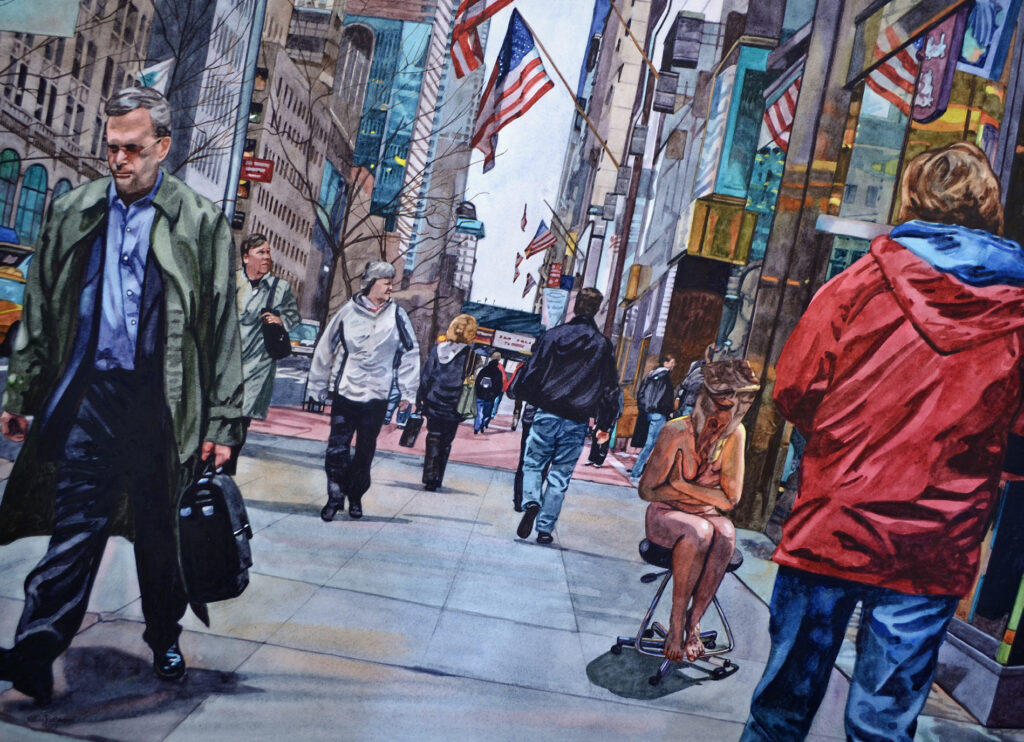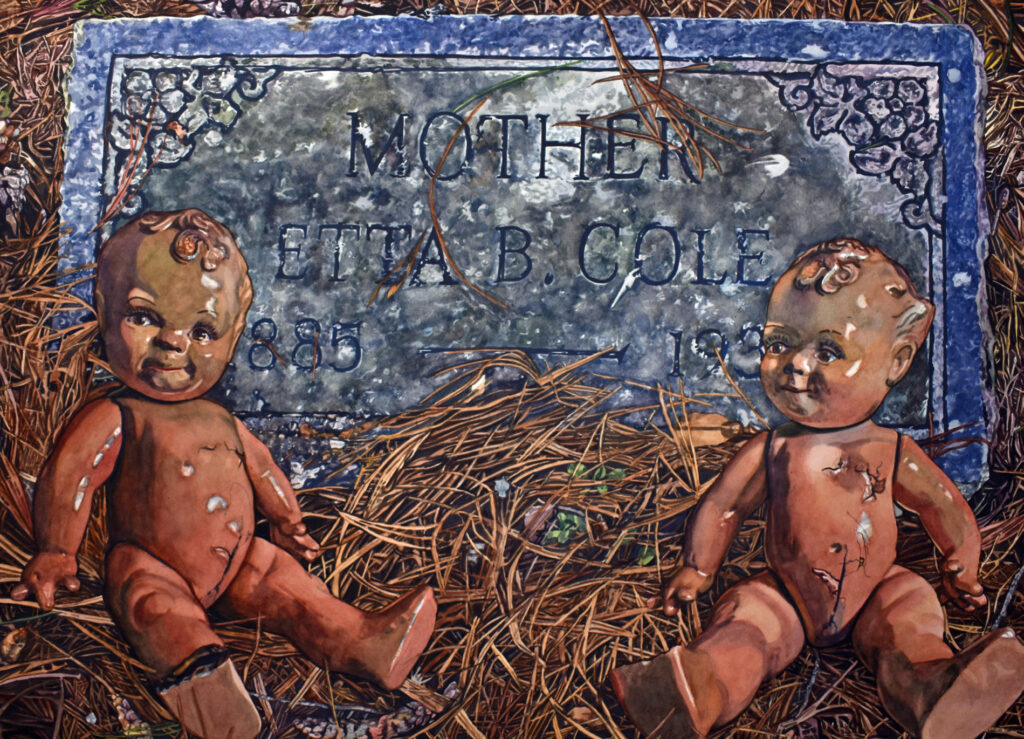
“For there is nothing heavier than compassion. Not even one’s own pain weighs so heavy as the pain one feels with someone, for someone, a pain intensified by the imagination and prolonged by a hundred echoes.” —Milan Kundera
This quote by author Milan Kundera could describe the work of painter, Valerie Patterson who creates from the well of her own feelings, personal knowledge, and that of others. This empathic artist makes hyper-realistic paintings, intense while sympathetic, underscoring the grave difficulties of our modern life. Some images result from her personal experiences, but many more have evolved from the emotions of others, a coalescence of feelings she senses as helping her to have “a fervent set of ethical principles” guiding her artwork.
This sense of rightness in the world was nurtured by her minister father and educator mother, their ethos informing their daughter’s life views, her current detailed watercolors of limpid paint giving viewers a visceral accessibility, the visual confrontations stripping away the medium’s perfect veneer for dramatic, sobering outcomes. The pieces urge viewers to think and feel through Patterson’s painting technique based upon her past in-depth familiarity with oils so the present layering of water pigment and glazing in her paintings create “flawless surface illusion(s)” cloaking the instinctual underlying surrealistic stories of the works.
But, beneath the translucent surfaces, there is formidable angst; sometimes subjects are depicted with sardonic humor and at other times are ensconced in shadowy, isolated sadness. Her spectral nudes with paper bags over faces, one entitled Ghost in The Machine in a depressing city setting, conjures up not only feelings of urban anonymity, but also reminds me of a “capiroted” penitent in Torquemada’s Inquisition. Her renderings of solitary children are infused with trauma, devastatingly evident in paintings, such as Survivors, her interpretation of the wreckage of 9/11 aftermath or Response, a rosy little girl’s pleading for release from dismal city life along with another watercolor of a child intently writing “HELP!” in chalk on a sidewalk next to a ghostly American flag, perhaps signifying the artist’s worries for our future. These are just some of the many depictions of concern Patterson paints, graphic expressions almost crushing viewers from the weight of bruised human psyches.

The works, too, might be colored by allusions to the mythic “dark tower” as the artist appreciates Stephen King’s writings and has been influenced intuitively by them. Patterson says she has read nearly all King’s works and views his youthful characters having profound friendships with one another as bonds against darkness. This provides impetus for so many of the artist’s emotionally charged images where her portrayals of children, like King’s profiles of them, symbolize, in Patterson’s own words, “purity and innocence in the face of predatory antagonists.” Too, I envision all these children almost as virtual refugees from a gloomy scene by Thomas Moran.
Like the author, Patterson repeatedly calls out evil and her artistic renderings elicit viewer discomfort. This can be seen in the painter’s recurrent employ of images of baby dolls, present in so many of the pieces such as in the disturbing watercolor, Our Grateful Dead, where disconcerting, sweet countenances on two dolls exude horror as they are propped up against a mother’s gravestone, dispelling our ennui about cognizance of the corruption of innocence, shaking our sensibilities to the inconvenient and tragic awareness of death’s finality.
The artist’s absorption of empathetic politics arising from her family history and personal experiences is bedrock for her paintings as virtual antidotes to any encroaching totalitarianism that might be encountered in our day. Her emotionally intelligent watercolors support the quest for human freedom and accountability with an artistic plea that memories need to be tempered by agape from all of us and universal suffering must be soothed by a caring social balm devoid of petty culture wars. However, the struggle for this ideal is both joyous and painful and recognition of the dilemmas created by these yearnings ripple continuously throughout these paintings’ visual currents.
This artist’s use of graphic commentary to address the struggles of our fraught present is a vital addition to our formulations of perceptions of society’s well-being, now and in the future. Valerie Patterson endeavors to spark the very necessary urgent dialogs we must have to reduce the weight of the issues we confront daily as we balance precariously on this finite, small, life-sustaining planet. G&S





Leave a Comment